 |
 |
 |
| |
Lower CD4s and Higher Viral Load-Not Antiretrovirals-Tied to Excessive Weight Gain
|
| |
| |
IDWeek, September 29-October 3, 2021
Mark Mascolini
A lower CD4 count and a higher viral load when antiretroviral therapy (ART) began predicted excessive weight gain in a retrospective analysis of 266 people starting their first antiretroviral regimen [1]. But individual antiretrovirals or antiretroviral classes did not predict excessive weight gain, defined as the top 20% of weight gains in the group in the first 2 years of ART.
In previous research, gender, race, comorbidities, and especially certain antiretrovirals predicted weight gainsin people taking antiretroviral therapy. University of Colorado researchers conducted this retrospective cohort study to isolate factors linked to excessive weight gain and to assess the ability of early weight gain to predict excessive weight gain. They defined excessive weight gain as the top 20% of weight gainers in the group.
The analysis involved adults starting their first antiretroviral combination from January 2005 to March 2019. Participants had to have at least 2 years of on-treatment follow-up without changing their antiretroviral regimen and a viral load below 200 copies from 6 months to 2 years after starting therapy. The study excluded pregnant women and people without weight determined when they started ART and 2 years later. The research team considered weights recorded when ART began, 4 to 12 weeks later, 9 to 15 months later, and 21 to 27 months later.
Statisticians used bivariate and multivariate logistic regression to identify factors that predicted excessive weight gain at 2 years. The Pearson correlation coefficient assessed the correlation between early weight gain and gain at 2 years.
The 266 study participants had a median age of 36 years (interquartile range [IQR] 29 to 45), 25 (9%) were women, 112 (42%) Hispanic, 107 (40%) white, and 38 (14%) black. Median pretreatment CD4 count stood at 288 (IQR 157 to 435) and median viral load at 63,369 copies (IQR 23,952 to 154,283). The group had a median pretreatment weight of 163 lb (IQR 142 to 182) and a median initial body mass index of 23.7 kg/m2 (IQR 21.4 to 27.0).
While 35% of participants started treatment with an integrase inhibitor, 42% started with a nonnucleoside and 22% with a protease inhibitor. Favored nucleos(t)ides were tenofovir disoproxil fumarate (TDF) in 74%, tenofovir alafenamide (TAF) in 16%, and abacavir (ABC) in 10%).
Median group weight rose from 163 lb at baseline, to 170 lb at 1 year, and to 173 lb at 2 years. Those numbers translated into a 4% median gain over 2 years. Excessive weight gainers saw their weight rise more than 13% from baseline to 2 years. Most weight gain, 70%, came during the first year of therapy. Body mass index climbed from 23.7 kg/m2 at baseline to 25.2 kg/m2 at 2 years, sending the group just over the overweight threshold.
Median weight rose from 168 lb at baseline to 178 lb at 2 years in people starting an integrase inhibitor, from 165 lb to 173 lb in people starting a nonnucleoside, and from 145 lb to 166 lb in those starting a protease inhibitor.
Multivariate analysis independently linked only 2 factors to excessive weight gain after 2 years of a first antiretroviral regimen. Every 100-cell higher initial CD4 count cut chances of excessive weight gain 30% (adjusted odds ratio [aOR] 0.7, 95% confidence interval [CI] 0.6 to 1.0, P = 0.02). Every 10-fold higher initial viral load tripled chances of excessive weight gain (aOR 3.2, 95% CI 1.7 to 6.1, P = 0.0005). There were trends toward associations between younger age and female gender and excessive weight gains. But no antiretroviral regimens or individual nucleos(t)ide (ABC, TAF, or TDF) predicted excessive weight gain.
In 217 people with weight recorded 2 months after starting ART, early weight gain correlated positively with percent weight gain at 2 years (Pearson r = 0.58, P < 0.0001). Among people whose weight rose 2% or less in the first 2 months of ART, only 8% gained excessive weight by 2 years. Among people whose weight rose 3% or more at 2 months, 45% gained excessive weight by 2 years. Among people whose weight rose 5% or more at 2 months, 55% had excessive weight gain at 2 years. And among those whose weight rose more than 7% at 2 months, 68% gained excessive weight by 2 years.
The University of Colorado researchers urged colleagues to counsel people at higher risk for excessive weight gain-those with lower initial CD4 counts and higher viral loads-about the possibility of gaining excessive weight during the first 2 years of antiretroviral therapy.
The findings that lower pretreatment CD4 count and higher pretreatment viral load predict excessive weight gain at 2 years further complicate the ART-related weight-gain puzzle, suggesting that pretreatment viral or immunologic factors, or both, play a role.
Reference
1. Phupitakphol T, Hawkins K, McEwan D, Gardner EM. Massive weight gain in people with HIV (PWH) starting initial antiretroviral therapy (ART): risk factors and predictive ability of early weight gain. IDWeek, September 29-October 3, 2021. Abstract 72.
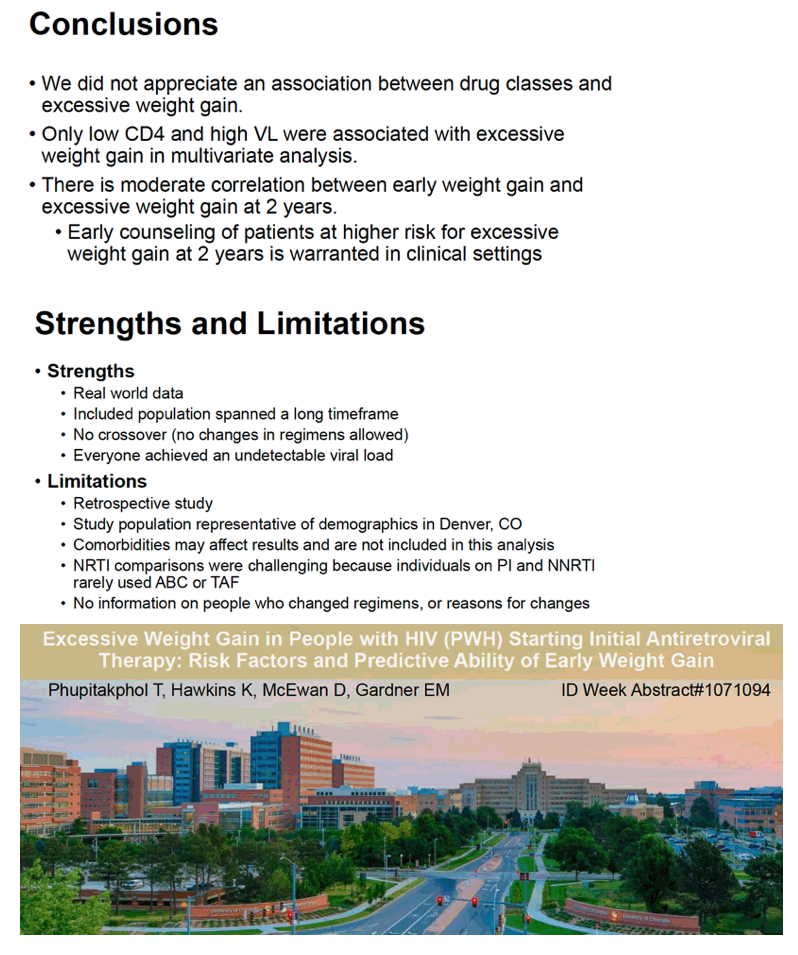
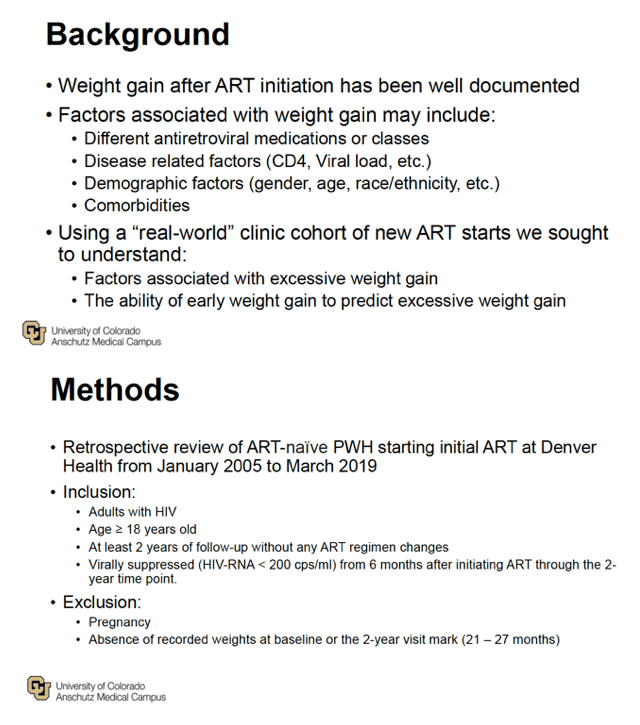
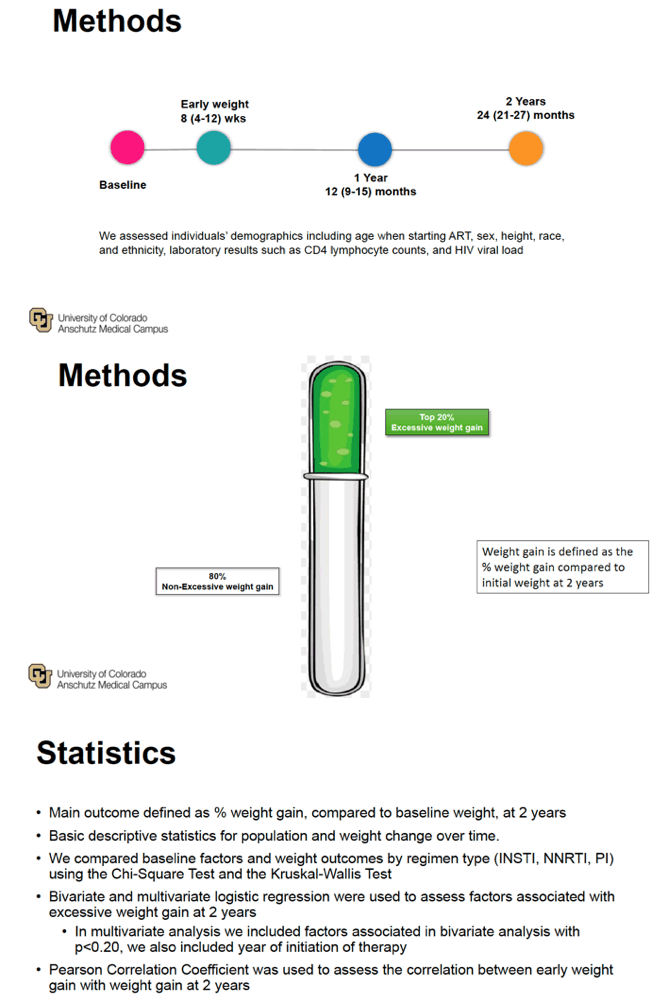
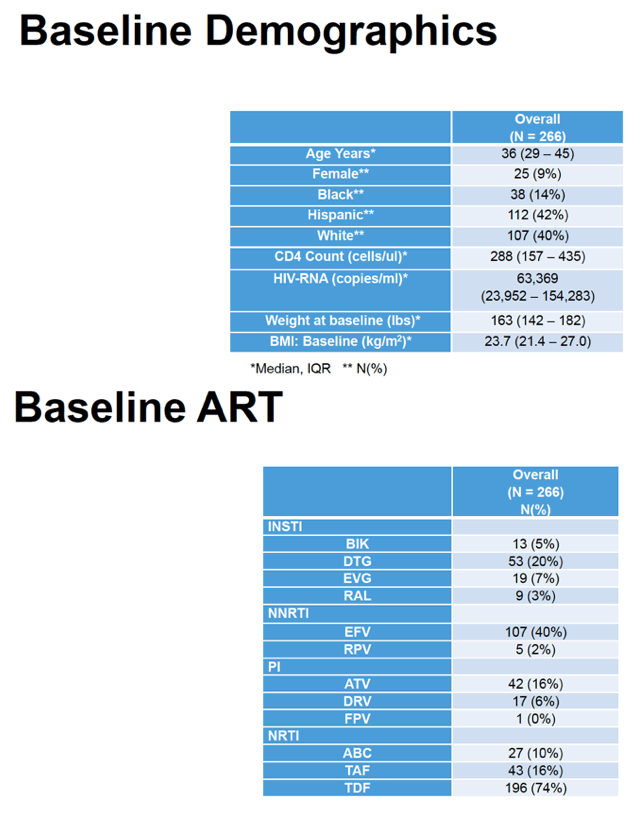
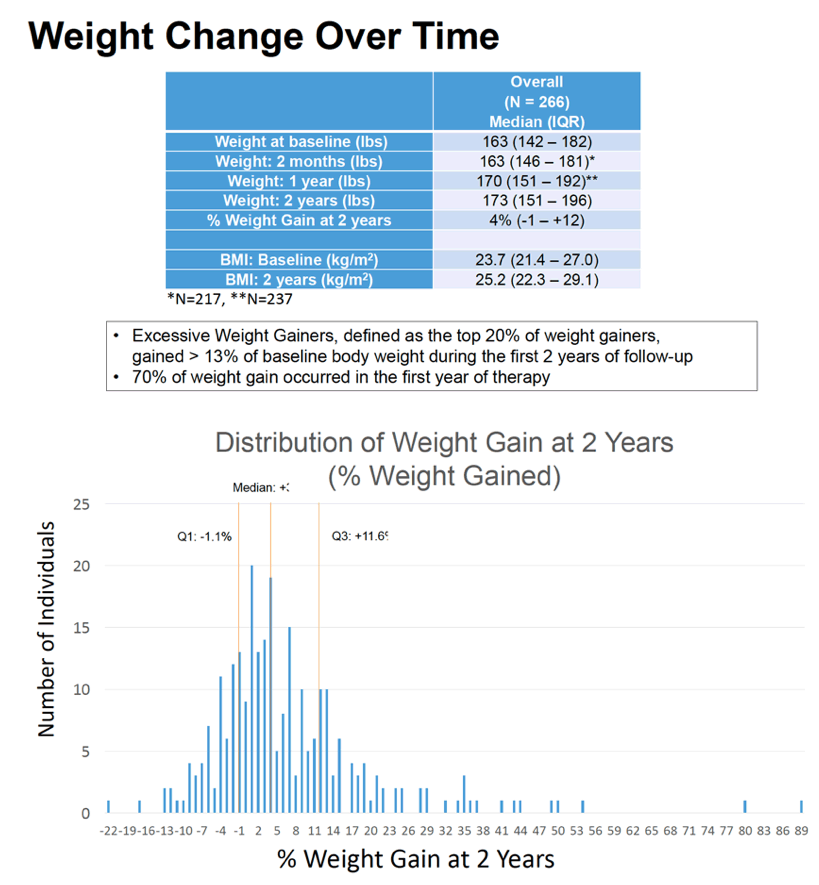
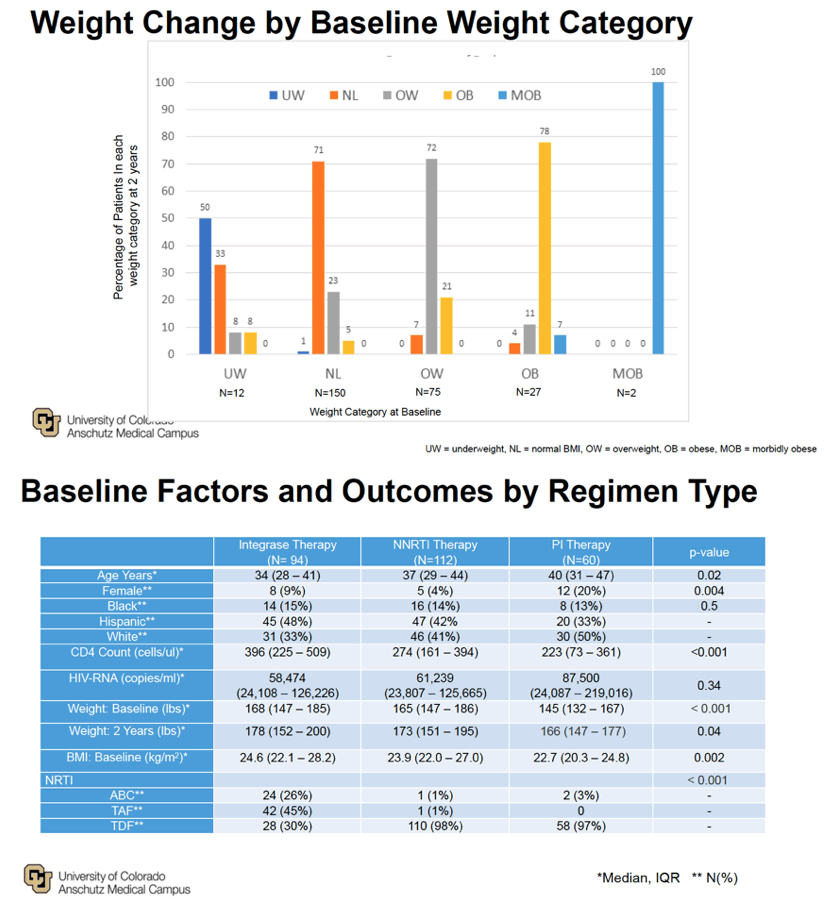
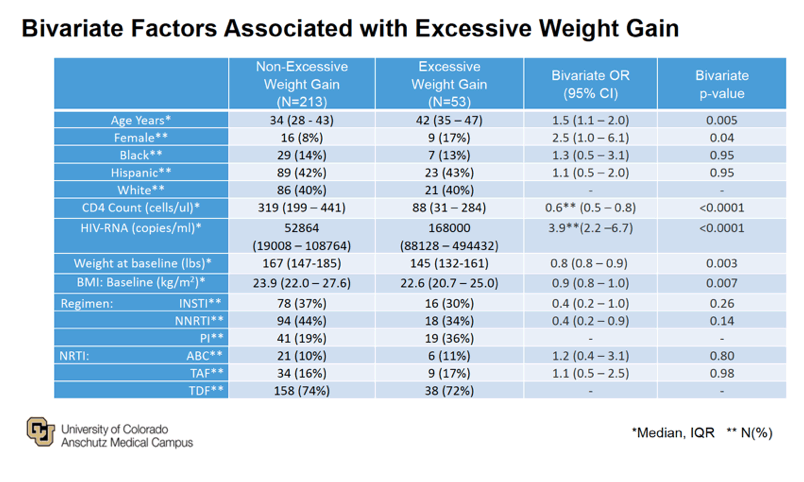
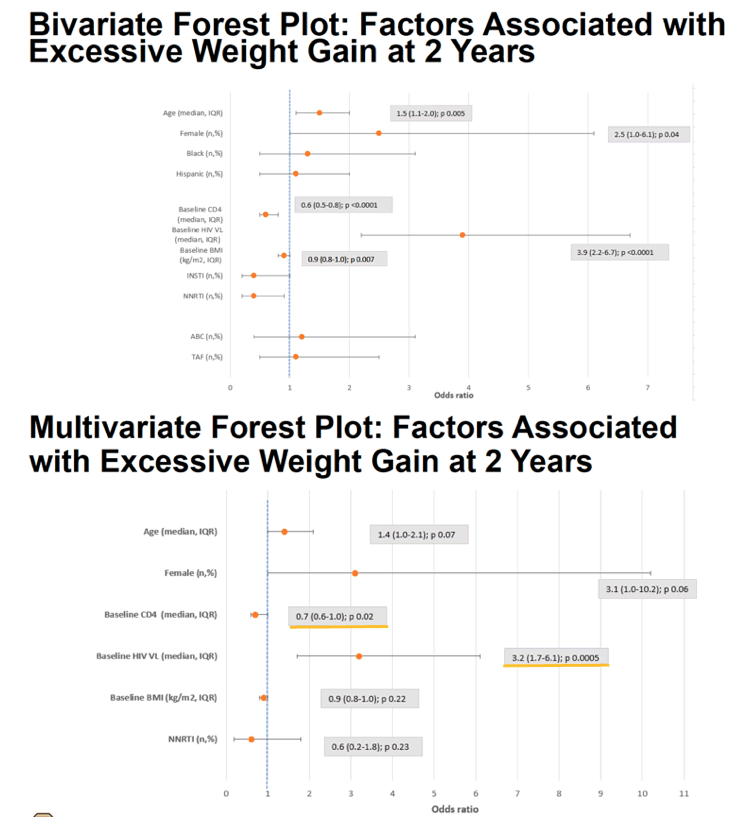
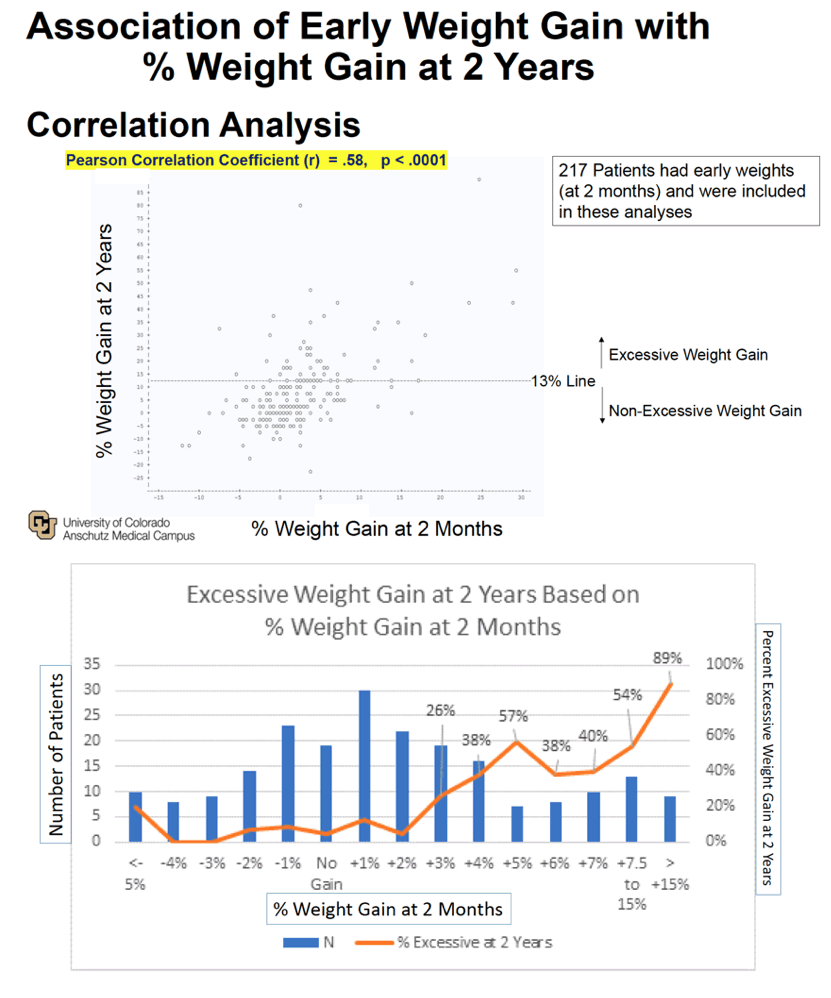
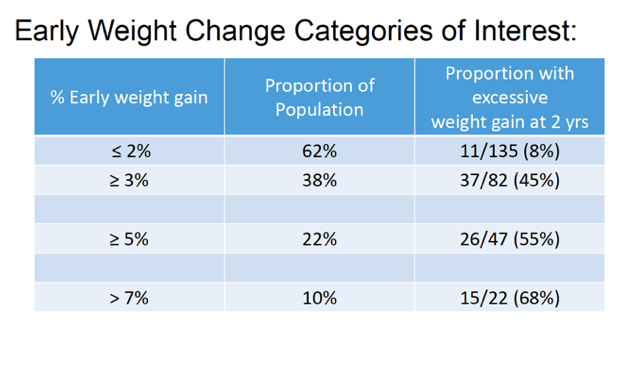
|
| |
|
 |
 |
|
|